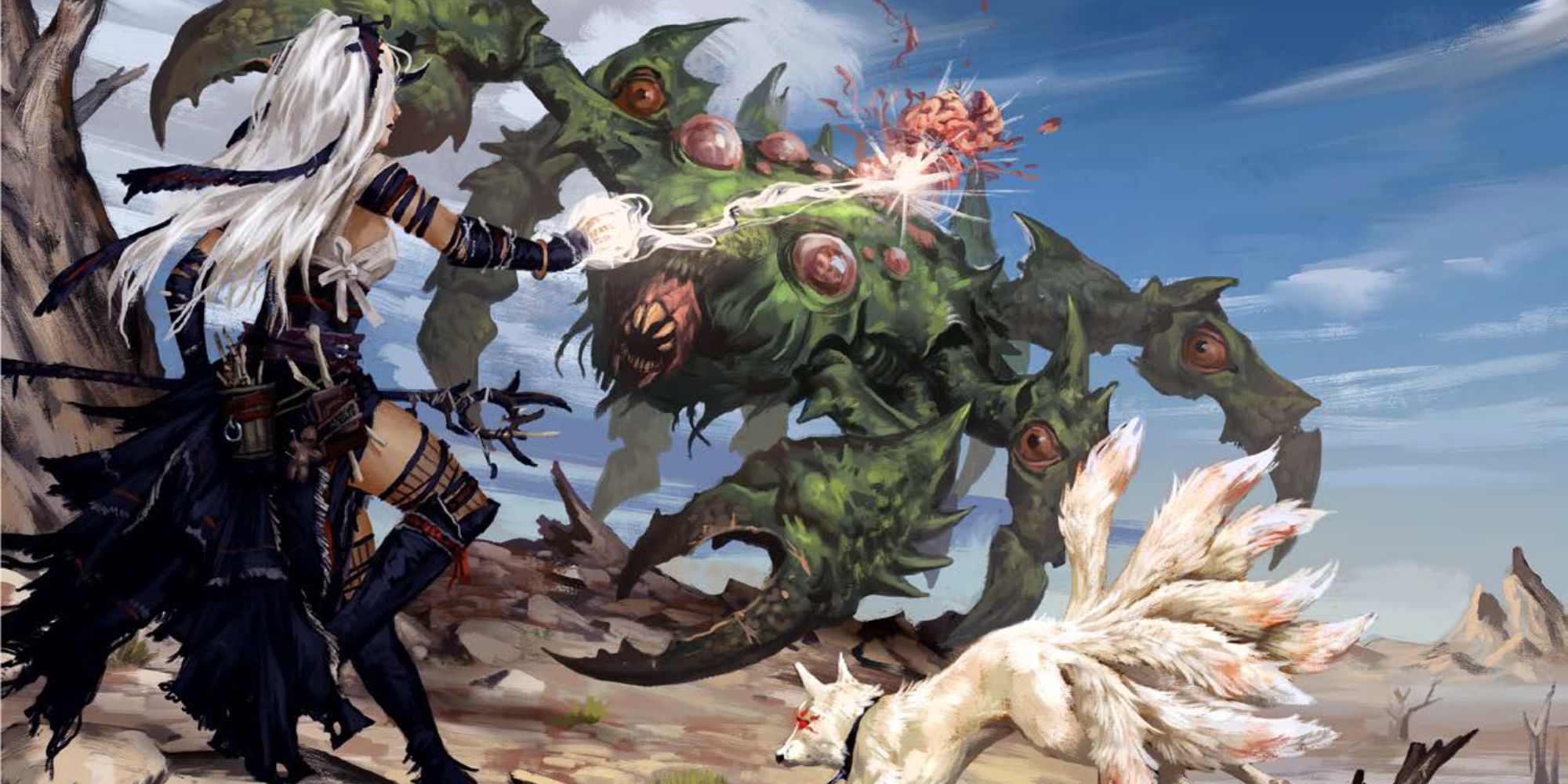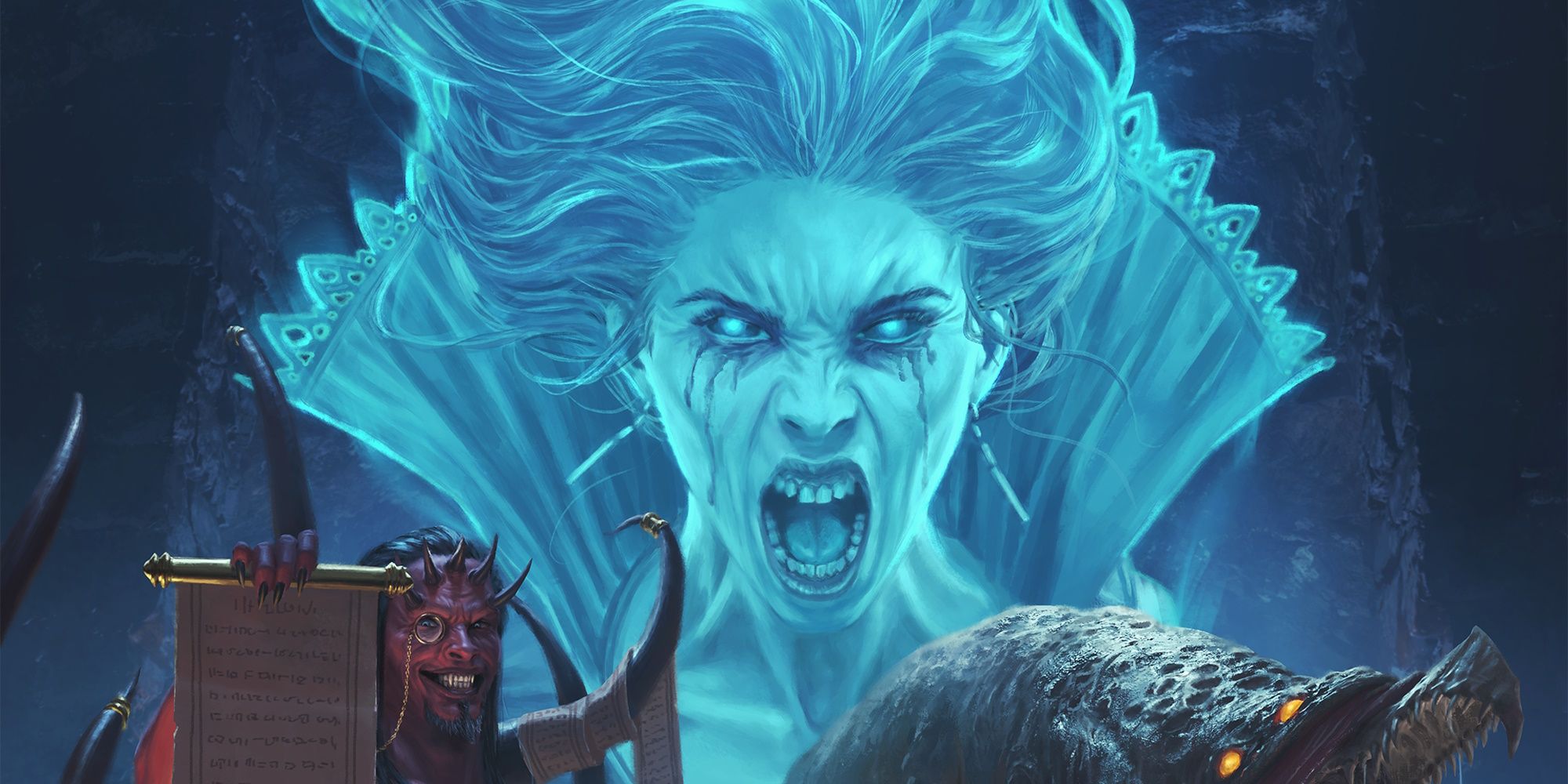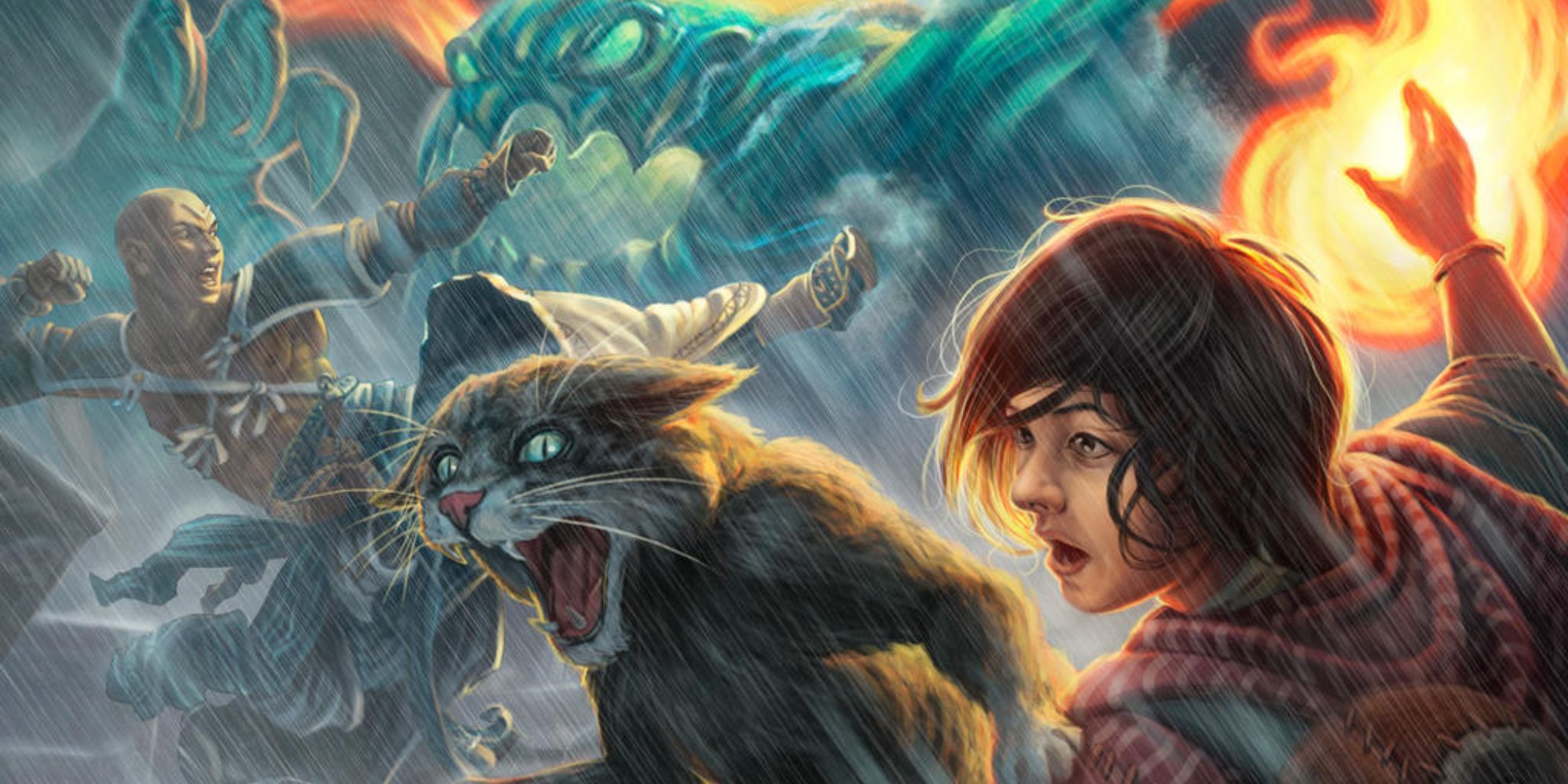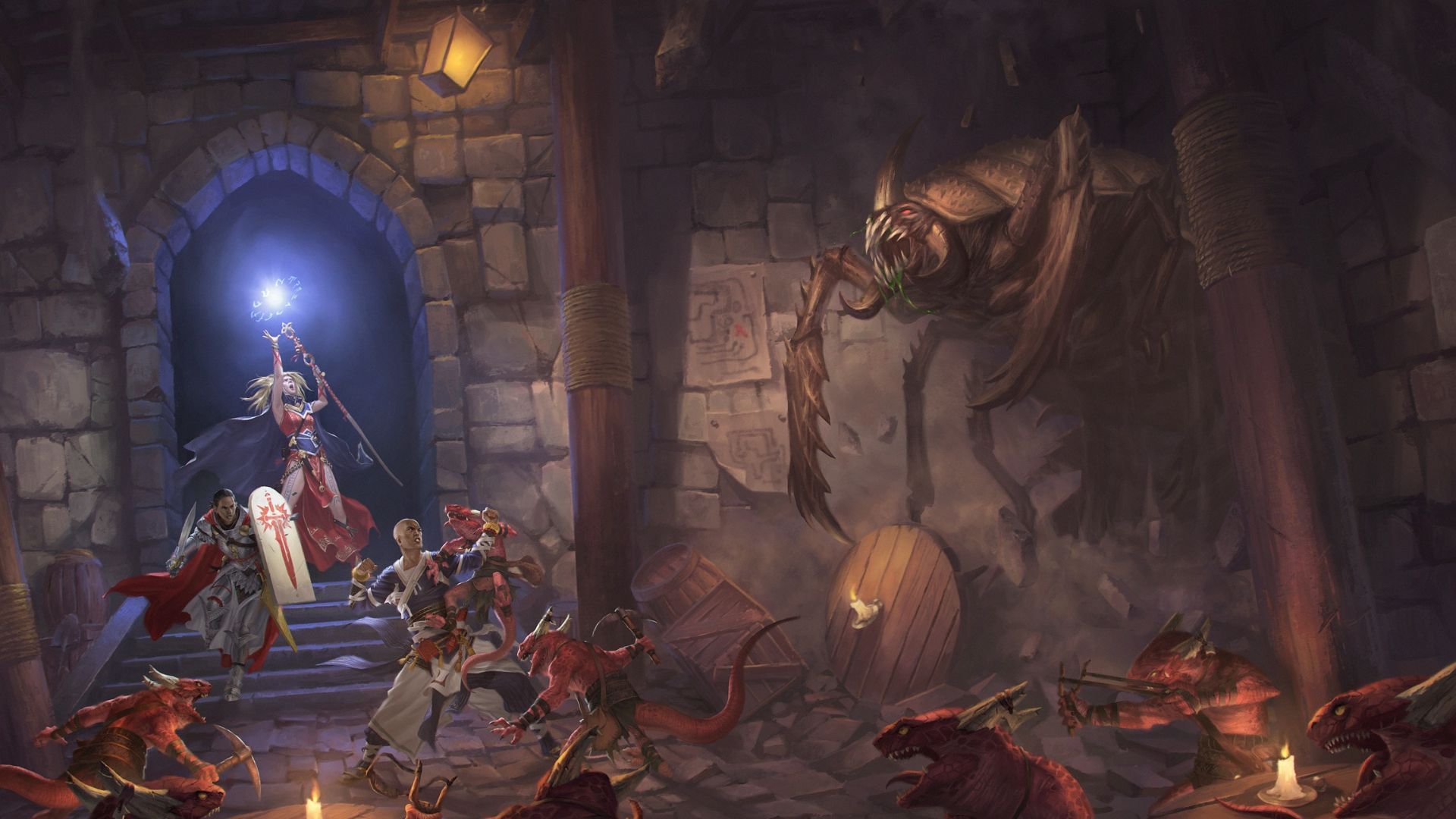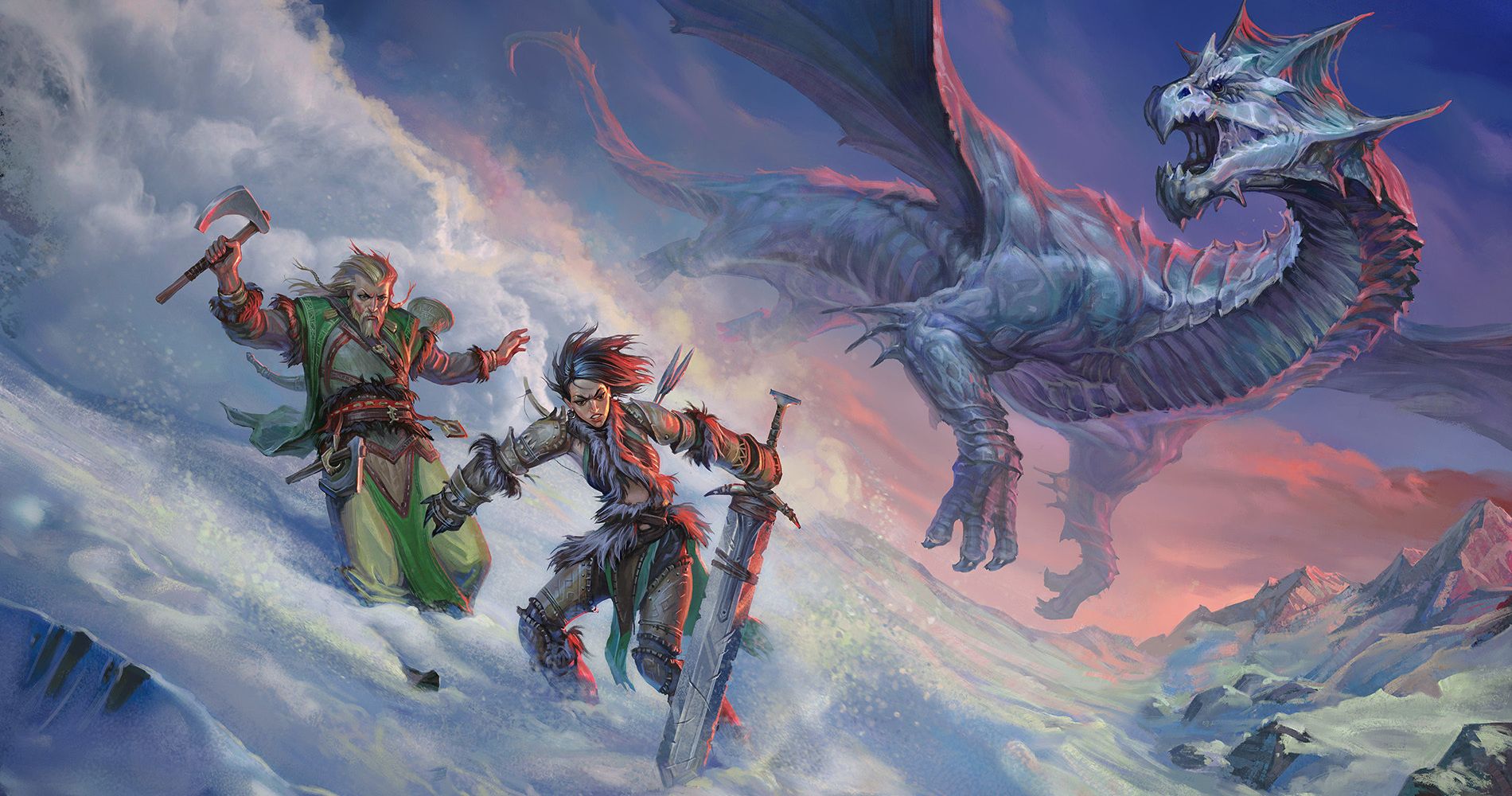The remastered version of Second Edition Pathfinder has worked hard to make the witch fun and accessible to new players. Previously relegated to the advanced books, the remaster places them firmly among the core classes for good reason.
Through the wide assortment of patrons, a Witch in Pathfinder can access any spellcasting form they wish. While wizards are relegated to arcane, druids to primal, and clerics to divine magic, a witch’s power is wholly determined by their subclass. This gives them tremendous versatility in how you can build and roleplay them. No two will be identical, but the fundamentals can help you decide on different directions to take them.
Witch Class Identity In Pathfinder 2E Remastered
The core identity of the witch is tied to their familiar, a magically infused companion that acts as a conduit to the source of their power. This source of power is the witch’s Patron, a figure of great power who has infused into the witch a portion of their magic via the familiar.
Don’t panic too hard if your familiar is killed. You can reincarnate or replace it at the start of the next day and will not lose access to your spellcasting in the meantime.
The types of spells a witch can cast are entirely dependent on their patron: A witch pledged to a powerful ice spirit will have an entirely different spell list available to one chosen by angels.
Players who aren’t interested in the dynamic of the familiar and patron might prefer a different spellcasting class depending on the type of magic they want to cast: Wizards for arcane, clerics for divine, druids for primal, and bards for occult.
|
Patron |
Spell List |
Theme |
Notes |
|---|---|---|---|
|
Faith’s Flamekeeper |
Divine |
Zealotry and ferver |
Allies who make a lot of attacks per turn will see the most benefit from your buffs. However, it can be fun to slap your bonus damage on a wizard upcasting Force Barrage instead. |
|
The Incribed One |
Arcane |
Knowledge and support |
Strengthens lore checks and provides flanking, making a perfect complement to a rogue or ranger. |
|
Resentment |
Occult |
Curses and debuff |
Has tools to apply and lengthen debuffs, setting up other heroes to take the spotlight against weakened enemies. |
|
Silence In Snow |
Primal |
Cold damage and area control |
The Snow Witch gains a lot of effects for slowing and controlling movement but plays rather similarly to a traditional druid. |
|
Spinner of Threads |
Occult |
Luck and fate |
The spinner of threads can nudge a lot of numbers up or down by one, giving extra AC, a conditional modifiers on attacks and skills, and other twists of fate. Keep your reactions open, and choose your moments carefully. |
|
Wilding Steward |
Primal |
Protector of nature |
A more defensive primal caster than the Snow Witch, this has a wider skillset than pure control. You gain a few animal-centered abilities that will gain more use in a wilderness campaign but might be irrelevant in a city. Tremorsense on your familiar will always be useful. |
|
Starless Shadow |
Occult |
Eldritch (or otherwise) horror |
The starless shadow requires a good amount of setup to make use of their unique abilities which can be difficult for the witch to pull off. An invisible or hidden familiar can inflict fear with no saving throw, but you’ll need to actively plan and build around doing that to compete with other patrons. |
The other defining aspect of the witch is the way they use magic. Witches are prepared casters, following the trend set by other systems such as older editions of Dungeons & Dragons. This means they need to anticipate the spells they might need in a day (and how many of them) based on what they expect to encounter.
Players uninterested in doing this type of preparation may prefer a spontaneous caster, such as a sorcerer. Spontaneous spellcasters can cast a greater number of spells but will know fewer overall, making them less versatile.
Attributes, Ancestries, And Backgrounds For A Witch
Witches are intelligence-focused casters, encouraging you to take an ancestry without an intelligence flaw (or take alternative boosts if you’re determined to play a Leshy). You should aim to have a +4 modifier in this ability score, with the others determined by how you plan to develop them later on:
- Dexterity and constitution if you are concerned about survivability or planning on a close-range playstyle. Witches gain no armor training, so rely on dexterity to evade attacks and hitpoints to survive them.
- Charisma and Wisdom enable other types of spellcasting. Multiclass dedications have been made stronger by the remaster’s changes to spellcasting proficiency. You’ll need a minimum of a +2 modifier to take a multiclass dedication for a casting school that uses charisma or wisdom but can then use the spellcasting proficiency from your Witch class.
- Strength will only be important if you plan to use it extensively. The Witch’s broom feat specifies that you can use a polearm as your flying broom. If that appeals to you, you’ll want the relevant attribute to wield it as a weapon.
The flexibility of ancestries gives lots of options that can still provide the attribute boosts to reach +4 in intelligence at first level.
|
Ancestry |
Attribute Boosts |
Attribute Flaw |
Additional Notes |
|---|---|---|---|
|
Elf |
Intelligence, Dexterity, free |
Constitution |
The ancient elf heritage starts the game with a multiclass dedication that lets them quickly get online if you have a specific multiclass concept planned out. |
|
Gnome |
Constitution, Charisma, Free |
Strength |
Gnomes are a fun storytelling option for witchcraft. The determination to experience new things and escape a painful bleaching can easily lead a gnome to pledge themselves to a patron they wouldn’t serve otherwise. |
|
Human |
Any two |
No flaw |
Skilled human doesn’t offer as much to a character with high intelligence, but the general feat of the versatile human can give you some nice customizability. |
|
Mixed Ancestry |
(Gains boosts of any one ancestry) |
(Gains flaw from same ancestry) |
The planar scions are already the product of otherworldly influences and might draw further attention from external powers as a result. A Nephilim witch might unknowingly barter for power with a celestial or fiend that is a distant family member. |
Familiar And Master Abilities In Pathfinder 2E Remastered
The familiar is a big part of the class identity of a witch and comes with a greater number of abilities than those of other classes. You can choose what abilities your familiar has at the start of the day, adding another step to your daily preparations where you can make changes to anticipate the needs of the day.
|
Familiar or Master Ability |
Effect |
Uses |
|---|---|---|
|
Skilled |
The familiar can use a skill with a modifier of your spell casting modifier plus your level. It can be taken multiple times for different skills. |
You can use this to cover the holes left in the party if a specific player is absent for a session, such as having your familiar learn society or nature when the bard and ranger is missing. |
|
Manual Dexterity |
Your familiar can use its limbs to manipulate complex objects that would normally need a hand with fingers. |
If you plan to use your familiar as a recon or stealth aide, this will let it properly interact with the environment. |
|
Flier |
The familiar can fly. |
Flight is rare at low levels, making your familiar a dominant scouting tool if it can observe the area from above. To make full use of that strategy, you’ll want to also obtain the Share Senses master ability. |
|
Tough |
The familiar gains two extra hitpoints per level. |
A 40 percent increase in hitpoints bolsters the survivability of your very squishable friend. |
|
Absorb Familiar |
You can conceal your familiar on or even in your body, as a worn item, tattoo, or birthmark. |
An alternative to bulking up your familiar is to hide it somewhere it can’t be targeted. Storing your familiar in a tattoo or accessory allows you to make use of its magic without the risk of it being killed. |
|
Familiar Focus |
Once per day, the familiar can restore a focus point to your pool. |
Depending on the type of game you’re playing, an extra daily focus point will either be a considerable boon or a drop in the bucket. If you rarely have time for the refocus activity this jumps in value. |
|
Spell Delivery |
You can channel a touch spell into your familiar and then have it move and attack with the spell. |
While limited to the range your familiar can travel in one action, this lets you cast risky touch spells without needing to get close to melee. |
You should discuss with your GM how much you are expected to build your familiarity for durability. Some tables might treat them as steeds, who shouldn’t be attacked when their rider poses a greater threat. Others might treat them similarly to summons and other companions that are ‘fair game’ to kill.
Teambuilding Synergies For A Witch
Second Edition Pathfinder is heavily team-oriented in how the classes operate. How to best play a witch will depend on your allies and how you can complement each other.
- Alchemists and witches both have access to potion crafting, although witches will need to invest in the first-level Cauldron feat. Combined with the high intelligence of both classes, you can expect to perform well on lore and medicine checks, making a party with these two very effective when able to plan for a specific encounter, affliction, or type of enemy.
- The Inscribed One patron for arcane witches can provide flanking to a rogue, letting them catch people off guard.
- The divine patron, faith’s flamekeeper, can provide temporary hitpoints to your allies. Characters that can stretch those hitpoints further, such as defensive fighters, make for strong targets of this ability.
- The Resentment Patron similarly works well with allies who apply negative conditions, extending the duration of short-lived debuffs.
- A witch’s familiar can be an obvious target if you use it aggressively. Fighters and other martials with access to reactive strikes and other defensive feats can keep it alive for longer.

